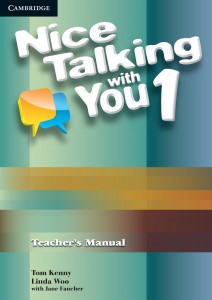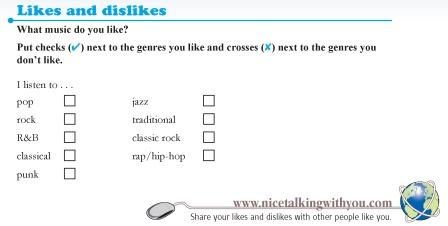 Hi Teachers,
Hi Teachers,
It’s been a frenzied start to the semester, so sorry that things are coming in piece-meal. The Teacher’s Guide is available now on the password-protected page. (Click the tab above that says “For Teachers.”)
Tom Kenny
 Hi Teachers,
Hi Teachers,
It’s been a frenzied start to the semester, so sorry that things are coming in piece-meal. The Teacher’s Guide is available now on the password-protected page. (Click the tab above that says “For Teachers.”)
Tom Kenny
Hey to fellow teachers,
I’ve just added all the audio files you need for teaching Nice Talking with You. You can get them in two big zipped folders, available now on the “For Teachers” page of our site.
This is Jun Kaneda, who used Nice Talking with You as a freshman at Nagoya University of Foreign Studies. As a job-hunting senior today, she has something to say about the future — a view that might surprise you.
For ages now, I’ve wanted to post a presentation of some kind about conversation strategies. First, I wanted to aim it at students. Then I decided to make it for teachers. Then I vacillated over which form to put it in: Slideshare, a PowerPoint, a Prezi, blah blah blah.
With some encouragement from Cambridge’s Richard Walker, who liked the video I did that showcased the topics of the new edition for Nice Talking with You, I figured, why not do a similar video that emphasized conversation strategies? The video is heavy on illustration and action so that we can keep students’ attention, but the organization and underlying “building blocks” metaphor of the video make it easy for teachers to visualize and remember.
So for teacher and learner alike, I hope it’s a cool way to conceptualize conversation strategies. You can see it here: “English fluency with conversation strategies” (about halfway down the page).
Thanks to Rich LePage for lending his legendary audio engineering talent.
 I think it wold be so cool if students using Nice Talking with You could take a quick online poll and then see how other students who took the poll answered. So, I’ve added some polls powered by Surveymonkey.
I think it wold be so cool if students using Nice Talking with You could take a quick online poll and then see how other students who took the poll answered. So, I’ve added some polls powered by Surveymonkey.
Lots of text units start with a warm-up that connects the unit topic to the learner’s life, like this:
I don’t think the days are too far off when all students, armed with their mobile devices, can give instant feedback and see how others responded. What will be REALLY cool is when students can see how guys in Taiwan differ from women in Japan on their likes & dislikes. That kind of instant feedback is available now, but it’s very costly. And, I think the interface for showing results to the end-user is very Excel-clunky.
If fellow teachers know of more affordable ways to get such results more elegantly, I’d love to hear about it!